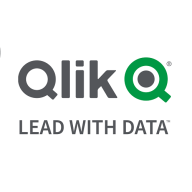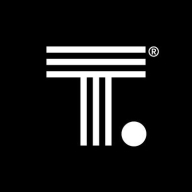


Find out what your peers are saying about Salesforce, Apache, Splunk and others in Data Visualization.
In my organization, we moved from OBI to Qlik Sense due to limitations with OBI, resulting in very high ROI.
This saves a significant amount of time, particularly for reports that would have needed around fifty people.
The ROI of using Tableau extends to its seamless integration across various platforms, as it's from Salesforce and thus not limited to any specific cloud provider.
Tableau is saving me time, money, and resources, which I would rate as ten.
Using ThoughtSpot has resulted in significant time savings and improved business sales by allowing us to identify sellers and buyers across regions, facilitating targeted marketing.
Based on our implementation in one project, we are trying to raise more funding to expand its use.
ThoughtSpot saves a significant amount of time compared to other tools and is very user-friendly.
While tech support is comprehensive, the stability of Qlik Sense means I generally do not need it.
Technical support requires improvement.
In Turkey, the consultant firms are very professional, and they support you.
They provide quick email and phone responses and have Thai-speaking personnel.
There should be consistent standards for all users.
The technical support for Tableau is quite good.
I stopped opening tickets due to insufficient and untimely responses.
ThoughtSpot provides a dedicated customer success person and the ability to submit tickets online, with a response time of no more than a day.
The knowledge base for ThoughtSpot is less robust compared to others.
It performs well in terms of performance and load compared to others.
Qlik Sense helps analyze data and can handle larger amounts of data compared to other BI tools.
It is easily scalable with Microsoft, with other services Azure and other tools they provide.
Tableau is easy to use across various dimensions, whether on-premises or on the cloud.
The solution is fully scalable and performs well even with large datasets, provided there is proper supporting hardware.
Tableau is easy to scale.
Tableau, Power BI, or Looker have separate tools for preparation, customization, and storytelling.
The platform does not have technical problems with scaling data or connections.
As our data has grown, I have validated huge datasets and complex models without significant issues.
The stability is very good.
The application hangs after continuous use due to the buildup of cache.
I rate the stability a five or six because Tableau updates very often with new versions or patches.
I use it primarily for large datasets, and it performs faster than regular data visualization tools such as Power BI, which has limits on dataset size.
The upgrades are smooth with no downtime, which is super important.
The responsiveness of accessing live data is exceptional and faster than most other BI tools.
Power BI has better visualizations and interactions with updates in 2023 that provide ease of use.
Providing an API feature to access data from the dashboard or QEDs could be beneficial.
There should be more comprehensive documentation and explanatory videos available to help clients understand and calculate capacity-based pricing, making it easier to predict costs before implementing Qlik Sense Cloud.
We cannot send the entire Excel file reports via email within Tableau.
The product owner should enhance its benefits or clarify its role.
It sometimes requires extensive investigation to determine why the data does not appear correctly.
Currently, it is not as customizable as the options available on Power BI or Tableau.
Handling governance when there are many models and dashboards is complex.
Enhancing integration capabilities with other tools like DBT would also be beneficial as it would make our lives easier.
It is just about how expensive it is to implement.
Compared to Power BI, it is definitely costly.
Among the BI tools and data analytics tools, Qlik is the most expensive.
Power BI as a much cheaper alternative.
A license for 150 users costs around $17,000 USD per year.
Looker is known to be quite expensive.
HubSpot is expensive.
ThoughtSpot's pricing is reasonable and in line with other BI tools.
From an end-user perspective, it's convenient and performance-oriented, providing something meaningful from all the organization's data.
It is a single product that I can use as an ETL database, BI, and more.
It has an interactive interface with Qlik graphs, pivot, and interactivity, which makes it easier to use than other tools.
A significant feature for me is the real-time connection to data sources because it effectively manages large data sets.
Tableau serves as a stable dashboarding tool for higher management, aiding in quick decision-making.
Building hyper extracts and visualization capabilities make Tableau a robust tool for data analysis.
Its compatibility with most databases, including the latest from FlexMovely and Redshift, allows users to create joins and worksheets easily.
This alerting feature is very beneficial for our company at the moment, and we use it extensively.
When I upload a data dump, AI analytics suggest possible data visualizations and insights, which I can pin to dashboards or live boards for modification.
| Product | Market Share (%) |
|---|---|
| Tableau Enterprise | 19.2% |
| Qlik Sense | 7.3% |
| ThoughtSpot | 2.7% |
| Other | 70.8% |



| Company Size | Count |
|---|---|
| Small Business | 32 |
| Midsize Enterprise | 40 |
| Large Enterprise | 83 |
| Company Size | Count |
|---|---|
| Small Business | 117 |
| Midsize Enterprise | 66 |
| Large Enterprise | 182 |
| Company Size | Count |
|---|---|
| Small Business | 3 |
| Large Enterprise | 12 |
Qlik Sense is a visual analytics and business intelligence (BI) platform that gives users full control over their system’s data. From this platform they can control every aspect of their system data. It maximizes an organization’s ability to make decisions driven by their data.
Benefits of Qlik Sense
Some of the benefits of using Qlik Sense include:
Reviews from Real Users
Qlik Sense stands out among its competitors for a number of reasons. Two major ones are its associative analytics technology and its remote access capability. Qlik Sense employs an associative analytics engine that gives users the ability to take their data analytics to the next level. Users can create visual connections between different datasets spread across their network, creating deep insights that enable users to gain a full understanding of their data. This engine is easily scaled up to allow a large number of users to benefit from the deep insights that it provides. Users can access Qlik Sense from anywhere in the world. Qlik Sense has an online portal that can be used consistently from anywhere at all. Having the ability to remotely analyze data gives users flexibility when it comes to choosing how to deploy their manpower.
Jarno L., the managing director of B2IT, writes, “The associative technology features are the solution's most valuable aspects. Qlik was the first company to implement an in-memory associative analytics engine. This basically means that all data is loaded into memory, but it also means that instead of joining data together, the data is associated together. From the front end, from the user interface point of view, data can be joined or included or excluded on the fly. It can be drilled down and drilled through and users can slice and dice it and that type of thing can be done from anywhere in the data to any other place in the data. It doesn't have to be predefined. It doesn't have to have hierarchies or anything like that.”
Tami S., the senior business intelligence analyst at the La Jolla Group, writes, “With the changing business landscape, it is nice to access Qlik Sense through an external website. As an organization when we use QlikView Desktop, we need to connect to our internal network. We can access QlikView through the QlikView access point but the website has a little different look and feel than the desktop application. We appreciate that Qlik Sense is browser-based and the user experience is the same whether at home, in the office or on a boat. As long as the user has internet access, performance is the same.”
Tableau Enterprise offers powerful features for creating interactive visualizations, dashboards, and maps, including drag-and-drop functionality and easy integration with multiple data sources, promoting real-time collaboration and self-service analysis.
Tableau Enterprise stands out with its ability to create user-friendly, interactive visualizations, making it pivotal for business intelligence applications. Users benefit from its seamless connectivity and advanced analytical functions, facilitating data blending and storytelling. Despite a complex learning curve and high licensing costs, its features like geospatial analysis and efficient content distribution drive its indispensable value for data-driven insights. Enhancements in predictive analytics and support integration with machine learning tools further its capabilities across industries.
What are the most valuable features?Tableau Enterprise is widely used for business intelligence, supporting industries like healthcare, telecommunications, and finance. Organizations utilize it to analyze performance indicators, operational insights, and financial analytics, enhancing decision-making through interactive reports and real-time data integration.
ThoughtSpot is a powerful business intelligence tool that allows easy searching and drilling into data. Its ad hoc exploration and query-based search features are highly valued, and it is easy to set up, stable, and scalable.
The solution is used for reporting purposes, self-service BI, and embedding into other applications for customers to do self-service analytics. It helps businesses with metrics, KPIs, and important insights by sourcing data from various sources into one golden source and visualizing it in an easy way for the business to consume. The pricing model is ideal, charging for data rather than the number of users.